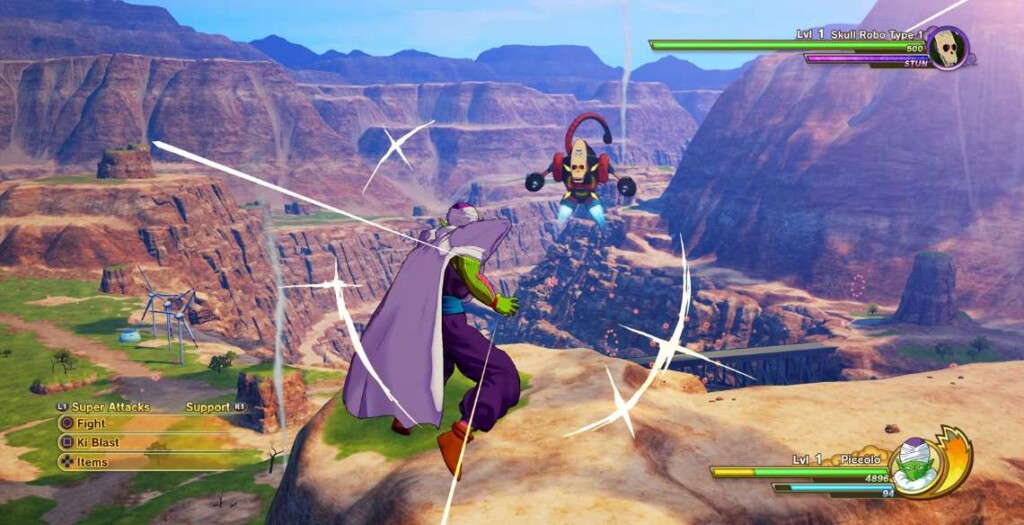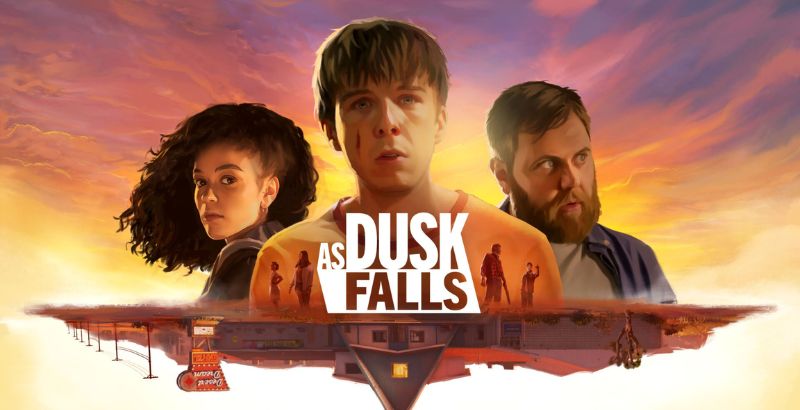Dragon Ball Z: Kakarot is an action RPG developed by Bandai Namco and CyberConnect2 and published by Bandai Namco. Here gamers follow the many battles and challenges faced by Goku(Kakarot) and his friends through the iconic series Dragon Ball Z. They will face aliens, androids, and even beings born of magic in their quest to protect the Earth and become the strongest fighters ever!
Dragon Ball Z (DBZ)the anime originally aired in 1989 and has become one of the seminal examples of Shonen anime. Over the decades the adventures of the Z Fighters have been thoroughly explored within the video game medium. With the release of Dragon Ball FighterZ two years ago, we got an amazing fighting game that both paid homage to its source material while also just being a blast to play. While Dragon Ball Z: Kakarot never reaches these heights of that game’s fun there are some great times to be had. Though they do come with some hurdles.
When talking about this game I feel it has to be acknowledged that this is probably the most faithful adaptation of Dragon Ball Z fans will ever get out of a video game. It was obviously done by people who truly cared about delivering a rewarding experience that let gamers relive all those stories. While this leads to capturing the best moments the series has to offer, it also leads to some especially slow stretches as well.
Whenever I think about DBZ, I always think of the high-octane battle. Of cool transformation and the fun comedic moments in between that keep the story fun. What I forget about is all the talking that doesn’t fall into any of these. This game can be incredibly slow. At one point during the series of fights with Frieza, I got to play two five-ish-minute fights over the course of an hour. The rest of the time was dialogue-filled cutscenes. This was an ongoing struggle with this game for me.
I’ve already seen DBZ. I know all the story beats and plot. And while some of these moments are fantastic to experience again, many are just throwaway exposition. Dragon Ball Z: Kakarot does allow the player to skip cutscenes, but unless I knew there wasn’t anything exciting coming, I didn’t want to use this function. I’d hate to miss one of those high points.

This will make this game a struggle even for some fans. I’ve rewatched DBZ a couple of times before. However, I never fully appreciated how I let a lot of the series flow in the background while doing other things. Not till a highlight came up did I really pay attention. While this may be a struggle for some, I do think this may be a great way for those interested in DBZ to experience the story.
While some minor things are omitted, like not forcing players to experience the often maligned Garlick Jr. story, all the best that DBZ has to offer is captured in Dragon Ball Z: Kakarot. If, however, you are one of the many people who roll their eyes at the thought of Super Saiyan transformations and countless Dragon Ball fueled resurrections, this game is unlikely to win you over.
While the handling of the story is a huge part of Dragon Ball Z: Kakarot, another big aspect is the gameplay. The developers have done all they can to pack every aspect of the memorable fight scenes into this game. But just like their tight adherence to the story, this comes with both its strengths and its weaknesses.
While the player only ever controls certain key characters, Goku, Vegeta, Piccolo, Gohan and Trunks, every Z fighter will make an appearance, usually in the form of an ally. Allies will join the player during battles. The presence of these characters is always felt as they leap into combat, lending their aid. The player can have their ally make one of two superattacks that run on a cool-down. Along with these a combo attack can be performed. The charge time for the combo attacks is very long, with most fights ending before the charge is complete.
The allies also are part of the weird challenge curve in Dragon Ball Z: Kakarot. Or more specifically, why no challenge curve exists. While most video games tend to ramp up the difficulty in a steady way, this game does not. This is due to two particular aspects. The first is the allies. Allies are only present during battles when the story dictates they should be. So you might find yourself struggling with a lesser opponent one fight, only to have a greater foe in the following fight fall easily to you and your two friends. This causes some victories to feel less rewarding than one might expect them to be.
The other way difficulty gets thrown for a loop is in simple adherence to the lore. While fighting Frieza as Vegeta, the battles are challenging. Once Goku steps up to fight him, however, Frieza becomes a chump. I found these moments less jarring than the ally-induced easy spots because they flowed so naturally with the story. Seeing Goku go super in this was a bigger hype moment than I expected. Part of that is due to the immediate impact this has on the gameplay. For this reason, I was happy to revel in the story-driven wins even if they felt a little like unearned victories.

Even when the player is required to go it alone, however, they are not bereft of options. With basic attacks, super attacks, and some characters gaining transformations, they can access the options in combat, which are enormous. And that was the biggest struggle for me when playing through some of the more challenging battles in Dragon Ball Z: Kakarot.
Normally in combat, the A B X Y buttons each have a basic action designated to them. Dodge, melee, basic energy attack, and charge ki, respectively. Then, if you hold down the left bumper, these buttons become the ones you use to access your super attacks. Holding down the right bumper makes it so they can access Ally Supers. Finally, the left trigger and right trigger are held down simultaneously, so have them control your transformations.
Needless to say, this can get a bit confusing when you are in the heat of battle. As I’m someone who sometimes gets simply X and Y swapped randomly in a fast-paced moment, getting which sub-menu I’m accessing mixed up happened a lot. And while this isn’t the games fault, in fact, I think they managed to keep all these commands as clear as is possible, it can cause a problem if you get things mixed up quickly as I do.
The third pillar of Dragon Ball Z: Kakarot is its leveling system. These were, hands down, the part of the game that surprised me the most in a really great way.
While flying around the open areas of the game, you will notice lots of orbs everywhere. Collecting these orbs allows the player to upgrade the skills and super attacks in a skill tree. These trees are gated off by levels so you can only dive so far so fast. I liked how plentiful the orbs are. With just a little bit of extra travel, you can keep yourself topped off and ready to go. Orbs are also gained through the battles you fight. However, I’m not sure if just those would be enough to allow you to keep everything leveled up.
While the skill trees let you level up your super attacks, training grounds allow you to earn them. New techniques are gated by story points and come with a recommended level to attempt. Once completed, the new power can be swapped in as one of your four ready-to-use super attacks.

Lastly, and my personal favorite, is the community boards. As you adventure through the world and story, you encounter all kinds of characters from the dragon ball world. As you do, you will gain soul emblems representing the different characters. Soul emblems can be placed on different community boards. These boards each govern an aspect of gameplay. Some provide boasts to attack or defense.
Some make the meals you consume more beneficial or the rewards you get at the end of battles better. Every soul emblem has a rank for each of the boards. And ranks can be improved with gifts that are earned throughout the game. However, emblems also get bonuses for being grouped with other certain characters. For example, Yamcha’s best stat might be for the adventuring board. However, he gets a bonus if he is grouped with Krillin and Goku(students of the turtle hermit), and they are both on the Z fighter board. Do you keep Yamcha on the adventuring board or move him to earn the bonus?
This system created a clash in my planning I genuinely enjoyed. I love maxing out systems and getting the best outcomes. But I also love seeing theme groups come together. And with each board having a finite number of spots, you will run out. And there are a lot of emblems to collect. From the core group of Z Fighters to much more obscure characters like Android eight from the original Dragon Ball series, there is a lot to do with this system.
With all that being said, I must say that I’ve enjoyed my time with Dragon Ball Z: Kakarot. While it has been a struggle, it provided a surprisingly laid-back enjoyment for me. Cruising the open areas on side missions and working its various leveling systems are genuinely enjoyable. While I struggled a little with some combat, even those supplied me with lots of enjoyable moments. Is it perfect? No. But Dragon Ball Z has always been a franchise that has thrived despite its shortcomings. And perhaps it is in that way that Dragon Ball Z: Kakarot most perfectly captures its source material.
Dragon Ball Z: Kakarot is available now on Xbox One, PlayStation 4, and PC.
Dragon Ball Z: Kakarot
-
Rating - 7/107/10
TL;DR
Is it perfect? No. But Dragon Ball Z has always been a franchise that has thrived despite its shortcomings. And perhaps it is in that way that Dragon Ball Z: Kakarot most perfectly captures its source material.







